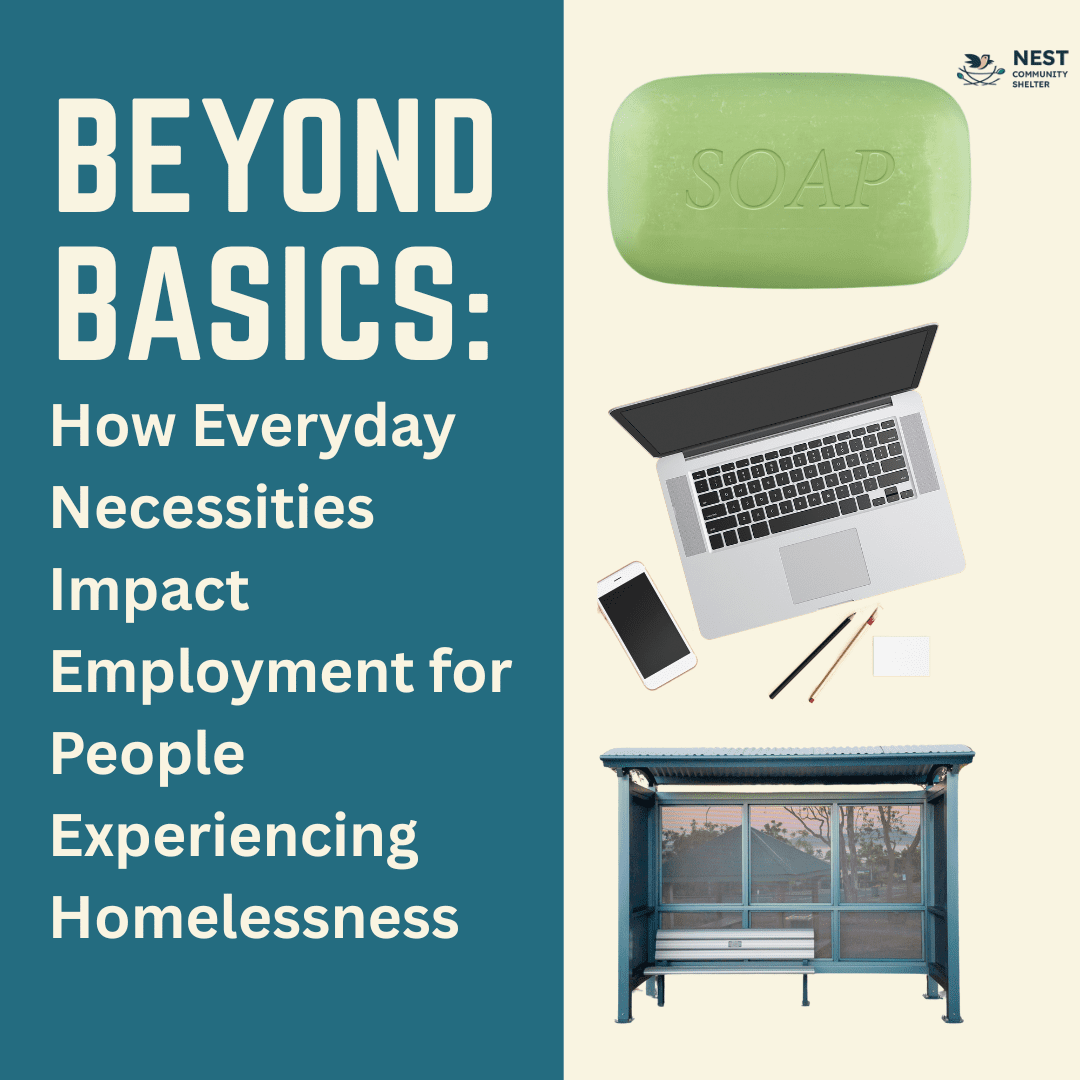
In our ongoing blog series about homelessness and employment barriers, many often focus on major obstacles like lack of permanent address, identification challenges, or gaps in employment history. However, some of the most persistent barriers are seemingly mundane daily necessities that many with stable housing take for granted. These basic needs we are speaking about today are —hygiene facilities, transportation, and communication tools—which can have the ability to be an insurmountable obstacle for job seekers experiencing homelessness without support to overcome these challenges.
The Hygiene and Appearance Challenge
For someone with stable housing, preparing for a job interview most likely involves a shower, clean clothes, and basic grooming. For someone experiencing homelessness, this simple routine becomes a complex logistical challenge.
Public shower facilities are scarce in most cities. Those that exist often have limited hours, require a membership (local gyms), or are located far from where people spend their nights. Currently, Nest partners with community partners to provide shower facilities for our guests.
Clean clothing is equally essential for job interviews and maintaining employment, yet laundry presents similar challenges. The cost of using laundromats is prohibitive for someone with limited resources—typically $3-5 per load on average. The process is time-consuming, requiring several hours to complete. Even when clean clothes are obtained, storage issues mean they can quickly become soiled when there’s no secure place to keep them. Once again, Nest Community Shelter must rely on our partners in the community to provide needed laundry services and lockers where possible.
Beyond cleanliness, appropriate attire for interviews or specific job requirements presents another hurdle. While some communities have organizations that provide professional clothing for job seekers, these services may require referrals or appointments, have a limited selection, and typically don’t address ongoing work attire needs after initial employment. The psychological impact of these challenges shouldn’t be underestimated.
Transportation: The Getting There Barrier
Even when job opportunities exist, physically getting to interviews and workplaces can present significant challenges for people experiencing homelessness.
While we do have a city bus in Michigan City that can provide some assistance with transportation, this only works if the place of employment is within walking distance to a bus stop. Furthermore, Nest’s guests only have access to the bus when it is running, making jobs begin before 6:30 am or after 6 pm nearly impossible to keep if you rely on the bus for regular transportation.
Transportation challenges involve not only the monetary cost but also the time cost. A journey that might take 20 minutes by car could take double the time each way via public transit. Unpredictable transit schedules may require leaving extremely early to ensure on-time arrival. These time demands create incredibly difficult situations for people balancing job searches with meeting basic needs. Many reports having to choose between attending job interviews or accessing meal services, for example.
Communication Barriers in a Digital World
Computer access for communication is not just convenient—it’s essential. From online applications to email interview invitations to phone screenings, the hiring process assumes consistent access to communication tools.
While mobile phone ownership has increased among people experiencing homelessness in recent years, significant barriers remain. Even low-cost phone plans typically start at $25-30 monthly, a substantial expense when resources are limited. Keeping phones charged presents another challenge, with limited access to outlets, and phones are among the most commonly stolen items, leading to frequent disconnections. Many individuals experience changing phone numbers when unable to maintain service, breaking contact with potential employers at critical moments in the hiring process.
The shift toward online job applications has created another significant barrier. Public libraries offer computers, but often with time limits that may be insufficient for completing complex applications. Digital literacy gaps present additional challenges, as many jobs now require basic computer proficiency, even for the application process. Managing email communications and digital documents becomes extraordinarily difficult without consistent access to technology.
Even with phone access, maintaining professional communications presents challenges. Creating and maintaining professional voicemail greetings, finding private spaces to make or receive important calls, and managing background noise when taking calls in public spaces or shelters all present difficulties. Scheduling specific call times becomes particularly challenging when balancing other survival needs.
Supporting Holistic Solutions
As communities across the nation work to address homelessness and employment barriers, recognizing the impact of these basic necessities is essential. Effective programs increasingly take a holistic approach, addressing not just housing and job training but also these fundamental daily needs.
For individuals wanting to support solutions, considers
- Supporting transportation voucher programs
- Contributing professional clothing to workforce organizations
- Volunteering technical skills for digital literacy programs
- Advocating for employment centers with comprehensive services
These actions help create systemic change for more accessible opportunities and pathways to stability.
By addressing these often-overlooked barriers, we can create more effective pathways to employment and stability for people experiencing homelessness in our communities.
This blog post is part of our ongoing series exploring the complex relationship between homelessness and employment barriers. Check back next week as we examine educational and skill development challenges.



